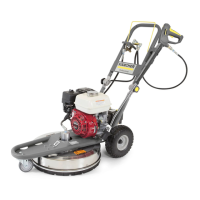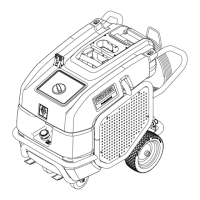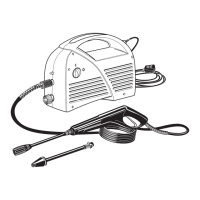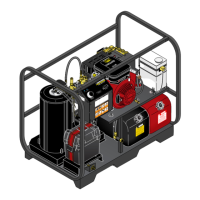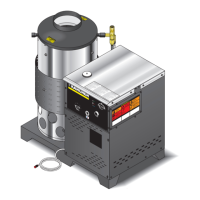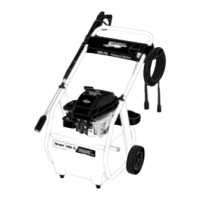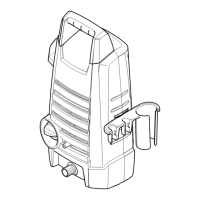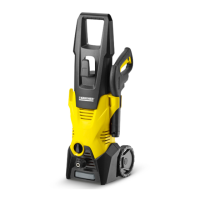– 5
DANGER
Risk of injury!
– Use Kärcher products only.
– Under no circumstances fill solvents
(petrol, aceton, diluting agent etc.)
– Avoid eye and skin contact.
– Observe safety and handling instruc-
tions by the detergent manufacturer.
Kärcher offers an individual cleaning
and care appliances program.
Your dealer will consult you gladly.
Refill detergent.
For connection values refer to technical
specifications.
Attach supply hose (minimum length
7.5 m, minimum diameter 3/4“) to the
water supply set by means of a hose
clamp.
Connect the supply hose to the water
connection point of the machine and at
the water supply point (for e.g. a tap).
Note: The supply hose and the hose clamp
are not included in the scope of delivery.
If you want to suck in water from an exter-
nal vessel, the following modification is
necessary:
Figure 6
Remove the two screws on the burner
casing.
Figure 7
Unscrew the back wall and remove it.
Figure 8
Remove water connection from the fine
filter.
Unscrew the fine filter from the pump
head.
Remove the system care reservoir.
Figure 9
Unscrew the top supply hose to the
swimmer container.
Connect the top supply hose at pump
head.
Replug the rinse line of the detergent
dosing valve to blind plugs.
Connect suction hose (minimum diame-
ter 3/4“) with filter (accessory) to the
water connection point.
– Max. suck height: 0.5 m
Until the pump sucked in water, you should:
Set the pressure/quantity regulation at
the pump unit to maximum quantity.
Close the dosing valve for the detergent.
DANGER
Risk of personal injury or damage! Never
suck in water from a drinking water contain-
er. Never suck in liquids which contain sol-
vents like lacquer thinner, petrol, oil or unfil-
tered water. The sealings within the device
are not solvent resistant. The spray mist of
solvents is highly inflammable, explosive
and poisonous.
Assembly in reverse order.
Note: Ensure that the solenoid valve cable
on the reservoir of the system care is not
pinched.
– For connection values, see technical
data and type plate.
– The electrical connections must be
done by an electrician according to IEC
60364-1.
DANGER
Risk of injury on account of electric shock!
–
Unsuitable electrical extension cables
can be hazardous. Only use electrical
extension cables outdoors which have
been approved and labelled for this pur-
pose and have an adequate cable
cross-section.
– Always unwind extension lines com-
pletely.
– The plug and coupling of the extension
cable used must be watertight.
ATTENTION
The highest allowed net impedance at the
electrical connection point (refer to techni-
cal data) is not to be exceeded. In case of
confusion regarding the power impedance
present on your connection, please contact
your utilities provider.
Refill detergent
Water connection
Suck in water from vessel
Power connection
27EN

